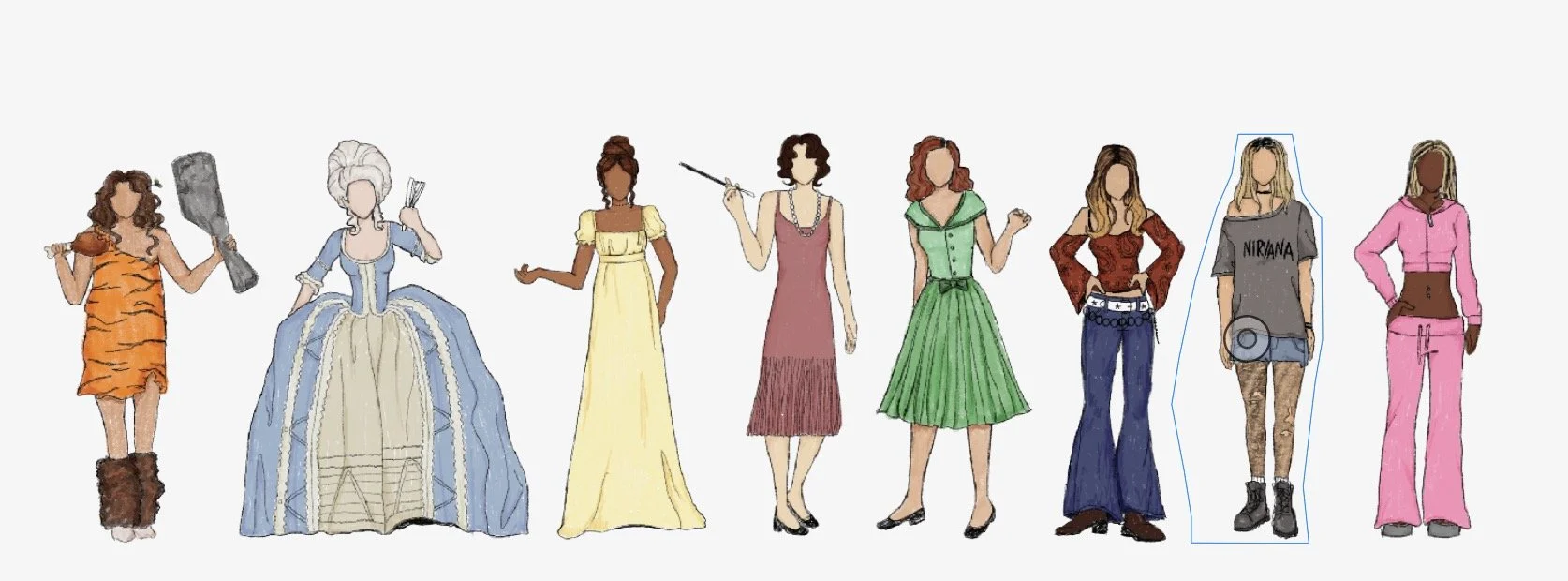Breaking seams and stereotypes through women’s fashion
Submissiveness, passivity, docility. These values have been instilled in women’s fashion ever since clothing transitioned from necessity to an opportunity for individuality. Our generation uses fashion as an outlet for self-expression and a way to exercise freedom. However, our female predecessors were not afforded the same luxury. From the Lex Oppia (a series of laws under the Roman Republic that restricted female extravagance) 215 B.C.E. ruling that women could not wear more than a half ounce of gold to early American indecency laws, women’s fashion has always been a way for men to stifle and patrol women. In the face of oppression, women have found ways to overcome, and fashion is a central part of this progress for women.
Beginning in the 19th century, a few brave women took the bold, and often dangerous, step to wear pants. A sharp contrast from the restricting petticoats, steel hoops and corsets women wore on a regular basis, trousers offered women a mobility–and thus a greater sense of autonomy–previously denied of them. Pants, historically, have been associated with masculinity and power. Popularized by and associated with trailblazers like Amelia Bloomer, the “bloomers” or pants of the 19th and 20th centuries became a symbol of freedom, redefining femininity. In New York City, women seen wearing pants in public were arrested, not due to any specific laws but merely because police officers assumed that any woman wearing bloomers were “up to no good”. Our own state enacted laws designed to keep women in their place, formally outlawing women’s ability to dress comfortably. In 1863, San Francisco’s Board of Supervisors passed a law that criminalized dressing in public in a way that “does not belong to his or her sex”. Over forty U.S. cities passed similar laws, resulting in anti-indecency laws that disproportionately targeted American women.
During the Roaring 20s, America shifted towards a culture of mass production and excessive consumption– and the fashion industry followed suit. As women entered the workforce as a result of the Industrial Revolution, they had the newfound luxury of disposable income. For the first time, women had the opportunity to spend on fashion, and their pent-up individuality found release in materialism. Independent from their part in the workforce, young women around the world started to identify with “flapperism”. It was easy to identify a flapper by her drop-waist shift dress, short haircut, bold makeup and excessive accessories. However, bobbed hair and short skirts were not simply fashion choices. Rather, this rebellious behavior was a symbol for unapologetic femininity.
During this era, women were finally comfortable in seeking joy, unrelated to men. Taught to only be seen as objects of sexual desire, but never to desire sex for themselves, women found themselves navigating a paradoxical societal expectation. The flapper era, through bold fashion statements, acknowledged the contradictions of this double standard: challenging traditional norms and sparking a sexual revolution.
Despite the progress we’ve made, the specter of male gaze continues to loom over women’s fashion. All of this in mind, it’s important to acknowledge that there should never be shame in wanting to look good, or even to conform to societal norms. The emphasis should always be on choice. Women seem to be criticized for nearly everything we do, and nearly everything we do winds up being patrolled by men. So, if fashion can be your escape from the shackles of male oppression, let it be that.
Especially at a school like Samo, where our dress code is so lenient, why do we neglect our privilege? After thousands of years of oppression–on our bodies, on our fashion, on our speech, why do we still dress without our own preferences and desires in mind? Dress off-putting: wear those weird patterned tights, clothes that don’t accentuate your figure (or “too much” of your figure), etc. Please, for the love of God, wear what makes you happy. Do it for your ever-corseted ancestors, do it to spite your toxic ex if you must, or, ideally, do it for yourself!
